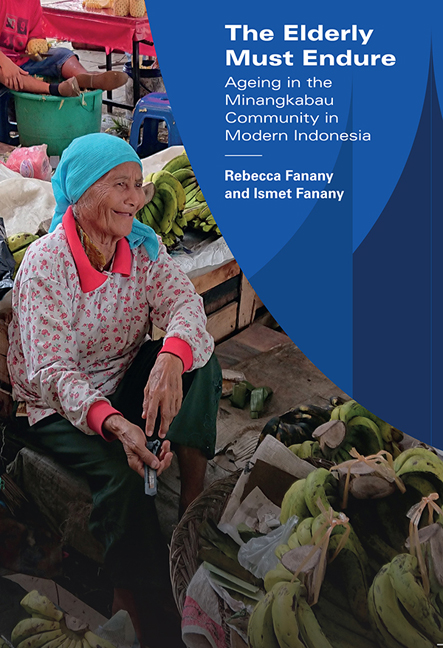Book contents
- Frontmatter
- Contents
- Acknowledgements
- Map of Indonesia
- Map of West Sumatra
- Map of the Village of Koto
- Aminah's Family Tree
- 1 Introduction
- 2 Ageing in the Past and Present
- 3 Adat Traditions and the Elderly
- 4 Religion and the Elderly
- 5 Language and the Elderly
- 6 Ageing in the Village
- 7 Ageing in Padang
- 8 Ageing in the Rantau
- 9 Ageing in an Institution
- 10 Ageing and Cultural Consonance
- 11 The Elderly Must Endure
- Afterword
- References
- Index
- About the Authors
6 - Ageing in the Village
Published online by Cambridge University Press: 16 May 2019
- Frontmatter
- Contents
- Acknowledgements
- Map of Indonesia
- Map of West Sumatra
- Map of the Village of Koto
- Aminah's Family Tree
- 1 Introduction
- 2 Ageing in the Past and Present
- 3 Adat Traditions and the Elderly
- 4 Religion and the Elderly
- 5 Language and the Elderly
- 6 Ageing in the Village
- 7 Ageing in Padang
- 8 Ageing in the Rantau
- 9 Ageing in an Institution
- 10 Ageing and Cultural Consonance
- 11 The Elderly Must Endure
- Afterword
- References
- Index
- About the Authors
Summary
THE VILLAGE OF KOTO
The village of Koto is very different today than even twenty years ago, and the comparison with the more distant past is stark. Physically, the village is much more developed than in the past. Many of the houses have been renovated or replaced by better quality, modern homes made of brick. It is not uncommon for residents to have cars or motorcycles which are visible on the road and parked near their homes. Public transportation of various kinds passes the village and can be used by residents to travel to the town of Batusangkar as well as to other villages in the general area. Virtually every house has a satellite dish, and television is the main form of entertainment for village residents. There is an elementary school, a mosque, several surau (prayer houses) and other public buildings, and also a few small stores some of the residents run from their homes. Electricity has been available in this area for more than forty years, and many people's standard of living has improved dramatically in the ensuing decades.
However, compared to the past, the village seems very empty. There are many fewer people visible on the roads, and there are not as many children as there used to be. One reason for this is that more people of working age, many of whom are better educated than ever before, have professional jobs, either in Batusangkar and the surrounding region or have moved to other towns to work. The lifestyle of those who have remained in the village has taken on a more modern pattern where they are away from home all day and return in the evening after work. Those engaged in traditional occupations in the agricultural sector are often working in the fields and gardens for much of the day. Even the older people seem to spend more time indoors, as there is less activity in the village during the day than there used to be in the past. In addition, there is evidence that the rate of migration is increasing. Marantau remains an attractive option for young people. In 2010, for example, the province of West Sumatra experienced a net loss of more than 800,000 people. In 1990, the comparable figure was 425,000. Most of this movement is from rural parts of the province to urban areas (BPS Sumatera Barat 2016e).
- Type
- Chapter
- Information
- The Elderly Must EndureAgeing in the Minangkabau Community in Modern Indonesia, pp. 116 - 139Publisher: ISEAS–Yusof Ishak InstitutePrint publication year: 2018



